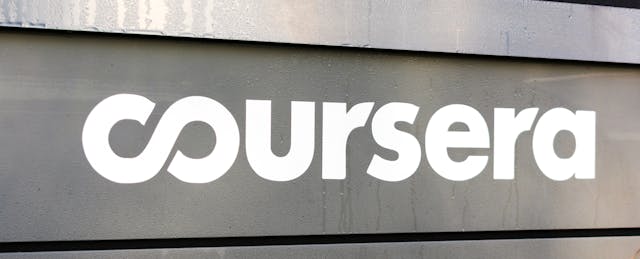This afternoon, Coursera filed its S-1 paperwork, offering a first look at how the Mountain View, Calif.-based online education provider is faring as it prepares to go public. And the numbers reveal both increasing growth and losses during a year of great disruption to schools and businesses impacted by the pandemic.
Coursera reported $293.5 million in revenue in 2020, marking a 59 percent increase from the previous year. That comes from over 77 million registered learners, along with more than 2,000 businesses (including 25 percent of Fortune 500 companies) and 100 government agencies that paid for its enterprise offerings. More than half (51 percent) of its revenue came from outside the U.S.
Also driving that growth is Coursera for Campus, which the company launched in late 2019 to let colleges offer its library of online courses to their students. Shortly after the outbreak, Coursera made this available for free to higher-ed institutions until Sept. 30, 2020. More than 4,000 from across the globe signed up, “making it one of our fastest growing offerings,” according to the filing. By year’s end, over 130 colleges and universities were paying for it.
In recent years, Coursera, better known for its courses and certificates, has been expanding into new territory: offering fully online bachelor’s and master’s degrees that range in cost from $9,000 to $45,000. There are now more than 11,000 students enrolled in 26 degree programs. As this number grows, it will put the company on a path to compete with other “online program management” (OPM) providers, including the likes of 2U, a publicly traded company, and Noodle Partners.
One key advantage that Coursera may have is its sizable user base of 77 million learners, says Sean Gallagher, founder and executive director of Northeastern University’s Center for the Future of Higher Education and Talent Strategy. “Even if they convert a small percentage into a paid certificate or degree, Coursera has changed the economics of customer acquisition because of their incredible reach,” he says.
Coursera reported that roughly half of its new degree students in 2020 were previously registered Coursera learners, and that its average student acquisition cost was under $2,000, which is lower than the industry standard, according to Gallagher.
Despite recording a revenue jump in 2020, Coursera posted a net loss of $66.8 million, up 43 percent from the previous year.
“We have experienced a significant increase in our operating costs associated with our services, primarily driven by our freemium offerings and marketing efforts” during the pandemic, the filing stated. It also warned that there is no guarantee that its growth rate will continue after the health crisis is over.
Like all S-1 filings, Coursera’s lists many risk factors that could adversely impact its business. One that is unusual focuses on the “unflattering light” cast by the media and government investigations on for-profit colleges and online school operators. Last year, Washington legislators publicly inquired about the business practices of the OPM providers, for instance.
“Even though we do not market our solutions to these institutions, this negative media attention may nevertheless add to the skepticism about online higher education generally, including our solutions,” the filing stated. It added: “If these few situations, or any additional misconduct, cause all online learning programs to be viewed by the public or policymakers unfavorably, we may find it difficult to enter into or renew agreements with our partners or attract additional learners for our partners’ programs.”
Coursera was incorporated in 2012 but got its start a year earlier, when Andrew Ng, then a computer science professor at Stanford University, launched a free machine learning class online. That attracted many students, and led him and a Stanford colleague, Daphne Koller, to start the company. Ng is chairman of the board and Daphne has left Coursera, which is now led by CEO Jeff Maggioncalda.
They were following in the footsteps of other Stanford professors, Peter Norvig and Sebastian Thrun, who had a similar experience with a viral online course that led them to start an online learning company called Udacity. The two companies would be joined by edX, a nonprofit competitor from MIT and Harvard. The near-simultaneous emergence of these three led The New York Times to call 2012 “The Year of the MOOCs,” short for massive open online courses.
In terms of sheer numbers, Coursera has raced ahead of the pack. EdX has around 500,000 students actively using its services at the time of writing, according to its website, and has served 37 million students overall. Udacity has pivoted away from colleges to focus on offering programs developed in partnership with technology companies.
To date, Coursera has raised $464 million in venture capital, the most recent chunk of which came via a $130 million Series F round last July. Its biggest institutional shareholders are New Enterprise Associates (which owns 18.3 percent of company stock), G Squared (15.9 percent) and Kleiner Perkins (9.2 percent).
According to the filing, Coursera is looking to raise up to $100 million through its IPO. The company plans to list on the New York Stock Exchange under the symbol “COUR.”


